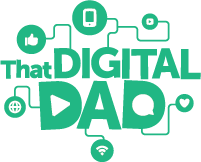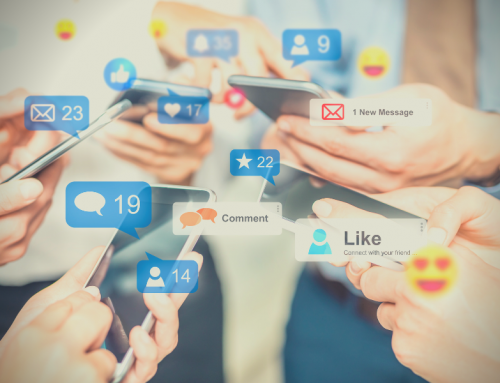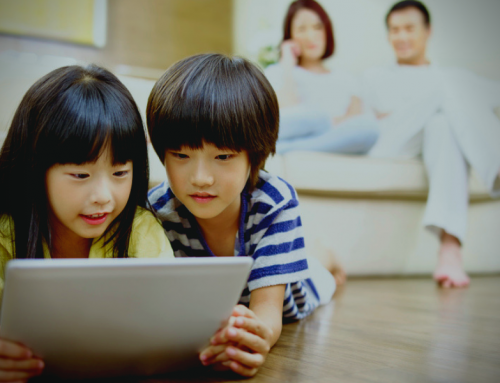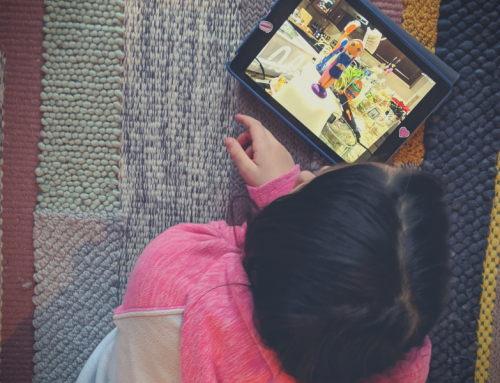For our kids, not all screen time is created equal. As parents, we need to be able to spot the difference.
As the Founder & CEO of a tech company that’s building products for kids, I often get questions from other parents. When I tell them what I do, the conversation almost always turns to screen time. When should we introduce screen time? How much is too much? And I’m far from the only person fielding these queries. One of my advisors is Dr. Renae Beaumont, an Assistant Professor of Psychology in Clinical Psychiatry at Weill Cornell Medicine, and creator the Secret Agent Society. She tells me that screen time is the number one concern she hears from parents today.
I think these questions are especially pressing now because we’re in the midst of a significant transition: parents have largely accepted that technology is a major part of their lives — and their children’s lives. It no longer seems like a feasible option to shelter your kids from screens.
While it’s great that parents are thinking critically about screen time, they’re actually asking the wrong question. It’s not about how much screen time is appropriate; the more important concern is the type of screen time. In addition to thinking about total time online, we need to take a close look at what our children are doing on their tablets, smartphones and hand-me-down devices. For our family, navigating the issue of screen time became easier when I started distinguishing between “screen time” and “screen captured.”
Defining Healthy Screen Time
The last thing I want to do is encourage technophobia. In fact, I’m a firm believer that technology can have a positive impact on us and our kids. Just think about the incredible amount of information that kids have access to — literally at their fingertips. When used responsibly, technology can open up minds and introduce adventure.
Growing up pre-internet, this kind of access to knowledge is something I couldn’t have imagined in my youth. I was limited to what I could find at the local library or in my parent’s encyclopedia set. I still remember the day that we got our first CD-ROM encyclopedia, which seems quaint now, but was nothing short of mind-blowing at the time. As an eager student, I relied on this new technology to improve my school work. But the 700 megabyte capacity of a CD-ROM is nothing compared to the amount of information on the internet. Just between Google, Amazon, Microsoft and Facebook servers, there is an estimated 1.2 million terabytes of data! Many, many orders of magnitude more information than what I had access to as a kid — and when used responsibly, it’s an invaluable resource for young learners.
I’ve witnessed firsthand how access to information can inspire kids. My daughter uses tech to learn about anything and everything on her mind, and I coach her on how to ask the right questions in search engines, and identify reliable results. This week, she learned about birthstones (and she’s concluded that my ruby is prettier than her opal). Under parental supervision, she also plays games like Roblox and Minecraft — which help hone her problem solving, creativity and collaboration skills.
And you can’t talk about tech without talking about connection. My daughter is able to stay in touch with family and friends in a way that simply wasn’t possible before the internet. When we moved to Vancouver in 2017, she had to leave friends behind. It used to be that, when a kid moved away, that was the last you saw of them. Today, my daughter uses FaceTime to talk to far-away friends and family — and we’ve even used tech to plan a visit with an old schoolmate she hasn’t physically seen in over a year.
Finally, screens can provide endless entertainment. Sure, I had TV when I was young, but there was only a few hours each day of child-friendly programming. Thanks to Netflix, YouTube and on-demand TV, there’s always something entertaining and appropriate for my daughter to enjoy. We watch a lot of shows together, and she spends a lot of time on the YouTube channels I’ve pre-approved. I also have a 22-month-old son, and yes, I’ll admit that my wife and I occasionally put him in front Baby Shark, because he loves it and it gives us a small break.
These are just a few examples of how screen time has had a positive impact on my children. With proper supervision, the wealth of information on the internet can help kids learn. Games can encourage skill development. Devices can solidify connections with loved ones. And of course, Baby Shark can induce giggles. There is big difference though between our kids enjoying screen time, and our kids becoming “screen captured”.
What is Screen Captured?
“Screen captured” is the term I use to describe the problematic screen time parents should reduce or eliminate. Every one of us can become screen captured by technology that’s intentionally designed to manipulate and influence our behaviour — and our kids are especially vulnerable. In September 2019, I’ll be publishing my book Screen Captured, which explores the phenomenon at length, but I’ll share a key takeaway in the meantime. Screen capture relies on many different mechanisms, but the most common are algorithms and social validation metrics.
The algorithm thinks you’ll like this.
Algorithms have been a hot topic in the media lately — and a lot of the press has been negative. An algorithm, however, is not inherently evil; it’s just a set of rules that tells a computer how to perform a particular task. They have many different applications, but a lot of social media and e-commerce platforms use algorithms to analyze your data and “personalize” what you see.
I’m actually thankful for algorithms when I scroll through my Twitter and LinkedIn feeds, because they help to ensure I see posts I’ll be interested in. Similarly, Amazon’s algorithms make personalized suggestions, and I’ve added books and the odd 24-pack of toilet paper to my cart when they pop up in my recommendations. I use these platforms actively, but I am also acutely aware of the fact the algorithms are at work. I’m consciously choosing to trade a few subliminally-induced impulse purchases in exchange for a more relevant, personalized feed. But I’m an adult. Kids don’t yet have the agency to choose those tradeoffs, and they and won’t have the self-awareness to recognize when an algorithm is pulling at their synapses. Kids shouldn’t use platforms with algorithm-curated news feeds — including Facebook, Instagram, Twitter and Snapchat — at least not without close supervision. Parents are also well advised to heed the 13+ age limit in the terms of service.
YouTube deserves special attention here because it’s the number one platform for kids under 13. While it doesn’t have a “feed” per se, it still operates with an algorithm designed to pull you in. Since I’ve already shared how my daughter enjoys the platform, I’m not going to tell you to ban it for your kids. I’ll just warn you that the recommended videos can draw your kids into a proverbial rabbit hole. The way it works is by analyzing your viewing history, and suggesting similar content. But remember, YouTube doesn’t just do this to keep you endlessly entertained. They do it to keep you screen captured and show you as many ads as possible in the process.

The danger of the manipulation is not just in the advertisements. One recent study found that toddlers have a 45% chance of clicking through to inappropriate content within just ten recommended videos. The authors of the study identified the “dangers of crowd-sourced, uncurated content combined with engagement-oriented, gameable recommendation systems,” and I have to say I share their concerns, especially when family members are sharing a device. When the algorithm can’t distinguish between users, recommendations get jumbled together, and your toddler might see suggestions based on your teenager’s recent views.
Algorithms can screen capture you by serving you content you like. But there’s arguably an even greater danger when you’re on a platform that uses social validation to show you exactly how many people like you.
Those little red hearts aren’t harmless.
Vanity metrics are ubiquitous across platforms, and they lead to screen capture by giving us a sense of social validation. Likes and follower counts — among other metrics — are known to trigger dopamine our brain the same way gambling does. We anticipate a reward when we post on a social channel, and it’s no accident that tech companies exploit this human drive to feel accepted. It’s an intentional strategy to hook you in, and the platforms reap the benefit of increased daily and monthly active users who are actually addicted.
Recently, many of the people involved in designing platforms like Facebook and Instagram have spoken out about the addictive nature of the design. Tristan Harris, a former Google Product Manager, has been one of the most outspoken critics of addictive design. In a recent interview, he took aim at the Snapchat “streak” feature, which shows the number of days in a row that you’ve exchanged messages with a friend. According to Harris, kids are so stressed about their streak that, when they go on vacation, they actually give their password to other kids to keep the streaks going on their behalf. So he asks the question, “when these features are being designed, are they designed to help people live their life, or are they being designed because they’re best at hooking people into using the product?” You can probably guess how I would answer that question.
If you are tempted to write addictive design off as an unintended consequence, all you need to do is read a quote from Facebook’s founding president, Sean Parker, which is downright chilling. “We need to sort of give you a little dopamine hit every once in a while, because someone liked or commented on a photo or a post. And that’s going to get you to contribute more content, and that’s going to get you… more likes and comments. It’s a social validation feedback loop… exactly the kind of thing that a hacker like myself would come up with, because you’re exploiting a vulnerability in human psychology,” he says. So just imagine what this is doing to a developing brain. In that same interview, Parker might have said it best: “God only knows what it’s doing to our children’s brains.”
There are apps targeted to children that feature likes and follower counts, and even incentivize kids to amass followers by doling out rewards at different levels. TikTok, for example, is a hugely popular app, and likes are one of its core features. What’s truly troubling is the growing body of evidence that links vanity metrics to recent spikes in anxiety, depression and suicide rates among teens, especially females. Dr. Jean Twenge, who authored the book iGen, explores the subject at length. While I am not ready to definitively say that social media is to blame for these rising rates depression and anxiety (correlation doesn’t always mean causation), I do believe that where there’s smoke, there’s fire.
Practice Proper Screening
I wish it was simply a case of putting a time limit on screens and being done with it, but as parents, we really must think critically about what our kids are doing on those screens. If it came down to it, I’d much prefer 3 hours of healthy screen time to even 15 minutes of being screen captured. I’ve found that identifying the difference between screen time and screen captured has been very helpful for my family, and I hope other parents will as well.
Everything I’ve learned in my role as a tech CEO, and all the research I’ve done while writing Screen Captured has reinforced the importance of taking an active role in our kids’ digital lives — no ifs, ands or buts. In our household, that means we prefer Netflix, because the algorithm isn’t as sticky as the one used by YouTube. And when we do use YouTube, all the channels are pre-vetted, and videos don’t auto-play.
In our house, TikTok, Instagram and Facebook are off the table for my kids. And for that matter, the “children’s apps” that allow public posting and likes are off limits, too. Since my daughter is only eight, she won’t be signing up until we think she’s ready to understand the manipulations a little better. When she plays games online, I track all of her connections, and I try to participate with her as much as possible. We’ve even started coding mods in Minecraft together, which has been a great learning experience for her (and me!). My hope is that the distinction between screen time and screen captured will help make technology a more positive presence in every family. It’s certainly helped in my household!
– Sean, @thatdigitaldad






